.15" rain fell yesterday morning, .64" at St. Cloud.
Weekend Showers: best chance of a little rain early Saturday, again Sunday night. Most of the daylight hours should be dry both Saturday and Mother's Day. Expect more clouds than sun, a cool east breeze at 10-20 mph.
Walleye Fishing Opener Outlook: high pressure over Minnesota, light winds, plenty of sun, highs mostly in the 60s.
312 tornadoes reported last week, from April 25-28.
190 tornadoes estimated from 8 am April 27 to 8 am April 28, a new 24 hour record.
359 tornado deaths in April. The running 3-year April average for tornado fatalities nationwide is 6.
7,500,000 gallons/second: volume of water on the Mississippi River moving past Memphis Monday.
48 foot crest predicted for Memphis on May 11, just shy of the all-time record of 48.7 feet set in 1937.

Mother's Day. We've seen worse. Expect more clouds than sun Sunday,a cool east breeze, enough intervals of sun for at least mid 60s, the best chance of a few showers Sunday evening and night.
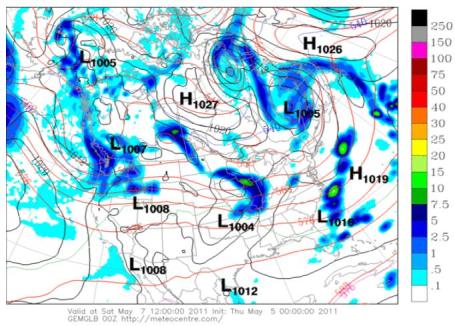
Another "Plan B" Saturday. A movie? Wander aimlessly around MOA? Saturday probably won't be a total wash-out, but all the models (including the Canadian "GEM" model above) keep a persistent band of showers hovering of much of central and southern Minnesota part of the day Saturday, especially morning hours. The northern half of the state looks drier, probably a nicer day north of Brainerd.
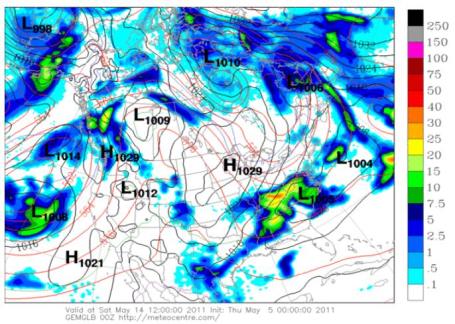
Good Timing? If the long-range models are correct (we'll see) the weather may be "too nice" for fishing on Saturday, May 14, for the big Walleye Opener in Minnesota. After a week of showers and T-storms the brunt of the moisture is forecast to push east by late Friday, a big bubble of high pressure right over Minnesota at noon on May 14 (GEM model map above), hinting at bright sun, a few fair-weather "popcorn" cumulus clouds, highs probably in the 60s. The fishing pros I know all prefer patchy clouds and a stiff breeze, a "walleye chop", along with a falling barometer. No such luck this year - although just about everyone else may be very happy.

Largest Tornado Outbreak In U.S. History. Here's a summary from NOAA, including a look at high-resolution aerial imagery to assess tornado damage: "Emergency responders and members of the public can now get a birds-eye view of the destruction wreaked by more than 305 reported tornadoes that swept through parts of the Southeast the week of April 25, killing more than 320 people. Through NOAA’s National Geodetic Survey website, visitors can view a map of the region and click on an icon to view a thumbnail or high-definition image of a specific area. Images are now available for some of the Southeast’s hardest-hit areas, including the Alabama cities of Tuscaloosa and Birmingham, as well as other areas of Mississippi and Georgia."
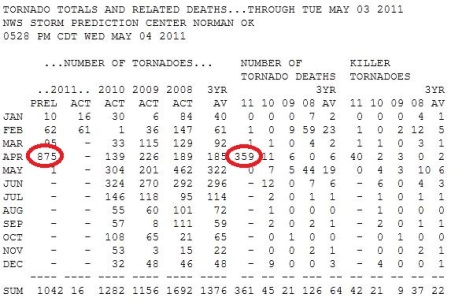
Off The Scale. The latest numbers from SPC are preliminary, it may take another 30-60 days for this to become final, but the preliminary tornado count for April is 875. To put that in comparison we have entire YEARS with roughly 800-900 tornadoes, nationwide - for the year! The running 3-year average, for comparison, is 185. I've never (ever) seen anything like this. 359 fatalities in April, the running 3-year average for tornado deaths is 6.

April's Tornado Outbreaks Two Largest In History. Dr. Jeff Masters has some additional insight into last week's unprecedented tornado outbreak in the south in his Wunderblog: "The largest tornado outbreak and greatest one-day total for tornadoes in history occurred during last week's historic super tornado outbreak, said NOAA in a press release on Wednesday. They estimate 190 tornadoes touched down during the 24-hour period from 8:00 a.m. EDT April 27 to 8:00 a.m. EDT April 28 (132 tornadoes have already been confirmed, with several weeks of damage surveys still to come.) NOAA's estimate for the number of tornadoes during the three-day April 25 - 28, 2011 Super Outbreak, is 305. This is nearly double the previous record for a multi-day tornado outbreak of 155 tornadoes, set just two weeks previously during the April 14 - 16, 2011 outbreak. There were tornado outbreaks in May 2004 (385 tornadoes) and May 2003 (401 tornadoes) that had more tornadoes, but these outbreaks occurred over an eight-day and eleven-day period, respectively, and were not due to a single storm system. Prior to April 2011, the most tornadoes in a 24-hour period, and in an outbreak lasting less than four days, was the 148 tornadoes in the Super Outbreak of April 3 - 4, 1974."

NOAA Satellites Proved Critical In Forecasts Of Tornado Outbreak. One tip-off that a tornado is on the ground? Power outages. Electrical operators can look at their grid and see (at a glance) where high winds have disrupted power lines, a possible indicator of violent winds, either straight-line or tornadic. Here's a story from NOAA: "Five days before a powerful storm system unleashed a barrage of deadly tornadoes that tore through six states, NOAA's polar-orbiting satellites helped forecasters at the agency's Storm Prediction Center (SPC) know of the impending danger. According to the latest SPC figures, there were a total of 312 tornado reports during the entire outbreak, from 8 a.m. EDT on April 25 to 8 a.m. on April 28. NOAA's National Weather Service forecast offices had a 27-minute average warning lead time for the tornado touchdowns."

Debris Removal Big Challenge, Like Katrina. The amount of debris produced by a couple hundred tornadoes last week is unimaginable, as reported by the Neshoba Democrat: "Residents along Mississippi 21 north continued to dig out from an EF-4 tornado that tore a 22-mile path from Northside Park to the Coy community last Wednesday afternoon, destroying or damaging 91 structures but, miraculously, injuring no one seriously in Neshoba County, the authorities said. Thirty-two Neshoba residents were displaced in the wake of the storm which packed winds up to 180 mph, officials said. Three Kemper County women died in a mobile home as the storm crossed the county line at Coy. (See story, page 1A.) Among the hardest hit areas in Neshoba County were along Mississippi 21 north near the intersection of Road 491, said Neshoba County Emergency Management Direct Jeff Mayo."

U.S. Storms Scatter Personal Items Far Away. Tornadoes carried debris hundreds of miles downwind, as reported by the Toronto Sun: "BIRMINGHAM, ALA. - Chad Hall spotted a small bag as he led power crews onto rural coal mining property a day after storms that killed more than 200 people in the state of Alabama last week. “In the middle of nowhere, he found this little cosmetic bag, something like a teenager would carry,” said Hall’s wife, Tonya, who looked inside and discovered an iPod, jewelry and report cards belonging to a girl who lived 30 miles (48 kms) away. Like thousands of others in the Southeast, the girl’s family home had been destroyed during the worst natural disaster in the United States since Hurricane Katrina in 2005. The twisters hurled pieces of their personal lives — photographs, bank records, diplomas — for dozens of miles and even into nearby states. Since then, the scattered possessions of storm victims have connected complete strangers — and prompted concerns about the potential for identity theft. Alabama Attorney General Luther Strange has urged those who may have lost sensitive documents to take steps to protect the information, including monitoring credit reports and adding initial security alerts. “This is a potential crisis that many may not anticipate as they are struggling to recover,” Strange said in a statement. “Vigilance and knowledge to prevent identity theft are our strongest weapons.Destruction was very wide there, close to a half mile," he said."
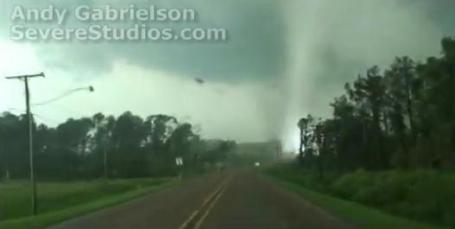
Birth Of An EF-5. Severe Studio's (amazingly prolific) storm chaser Andy Gabrielson was in the right spot at the right time, as a tornado developed virtually in front of him, near Philadelphia, Mississippi - a tornado that went on to strengthen to EF-5 strength. The YouTube video clip is here: "This video is not fake, nor "sped up". That's how fast the tornado was moving. The only editing done was to take out the parts where Andy put the camera down or was in the trees. No colorization was added to the video, it was just converted to Windows Media and then uploaded to YouTube.

Tornado, Flood, Hurricane Or Quake: Are You Covered For A Worst-Case Scenario? Dailyfinance.com asks the question that many of us (should) be asking right now, in light of the natural disasters gripping America right now: "The deadly tornadoes and flooding that affected many parts of the South and Midwest in April, the tragic earthquake in Japan, and a renewed sense of concern for national security after Osama bin Laden's death Sunday underscore the importance for property owners to be ready for a worst-case scenario. Last week, insurance companies acted quickly to send extra adjusters and mobile units into states where tornadoes touched down, and tens of thousands of homeowners have filed claims. State Farm reported that it has received nearly 24,000 housing and commercial related claims in Tennessee, Alabama, Georgia and Mississippi, as well as nearly 20,000 auto claims in Tennessee and Alabama. Total insured losses from the tornadoes last week are expected to be more than $2 billion -- a high figure for tornado damage but still low compared to damage from hurricanes and earthquakes. "The industry remains capable and prepared logistically and financially to handle these losses," said Robert Hartwig, president of the Insurance Information Institute."

A Year Later, Gratitude In A Tornado-Torn Town. The New York Times reports on the Mississippi town (Yazoo City) that was hit by TWO tornadoes a year ago - now threatened by flooding: "Ninety percent of the damaged housing has been rebuilt, and the remaining physical scars — cracked trees, more open space — are apparent only if one focuses on finding them. What is mortally wounded in this capital of cotton and corn, though, is something deeper, that Southern sense of peace in one’s place, of being one with the land and the elements. So as the people of Yazoo City, population 14,000, took stock of their lives in thankful remembrance, they could not put the April 2010 tornado into the past just yet. They were busy packing boxes of supplies to send to the latest victims, and keeping an eye on floods from the Mississippi River and its swollen tributaries, water that forecasters say is coming Yazoo County’s way. Evacuations have begun. Officials are being frank about the risks: levees will be topped and cause problems for the region. “I know I have a lot to be thankful for,” said Ms. Rhodes, 44. “First of all, I’m alive. My business is back. But a flood is coming? Let me tell you: when it thunders, I have a nervous breakdown. I freak out and panic every time I hear something like that.” Her dog does, too. Lulu, a Chihuahua, lost her hearing in the tornado last year and throws up every time the weather turns. “It’s been a hard year,” said Wendy Riley, 37, an employee at Just My Style. “I’ve felt lucky, devastated, numb. I guess I didn’t start feeling healthy again until September.”

Tuscaloosa Tornado Experience Shared In Harrowing Account By University of Alabama Student. What's it like to stare up at an EF-4 tornado? Randy Robins found out, shared it on his FB page, reprinted with permission on the al.com blog site: "TUSCALOOSA, Alabama -- This is my experience during the tornado that swept through Alberta and Tuscaloosa in as much detail as I can muster with the medication I am on. I need to put this down for therapeutic reasons and for others to read because I can't keep re-telling this story. If you are to take anything away from this story it is two things: 1) God saved so many people that day including me; and 2) disasters bring out the absolute best in some people...and the absolute worst in others. I am going to write down the events exactly as I remember them while I still can. I will add details that I have gathered from accounts by my neighbor and judging from materials stuck inside my body. I would also like to point out that any person I don't reference by name (such as neighbor) I had not really met before. Here goes: At roughly 4 p.m. on April 27, 2011, I was sitting in Finance 414 class listening to a presentation on industries, and the severe weather alarms went off and the University canceled classes for the rest of the day. I considered staying on campus, but I saw everyone else leaving and decided I would be fine going to my apartment (face palm). This is probably my biggest regret of my life purely for the fact that I let the actions of others sway my opinion and nearly kill me."
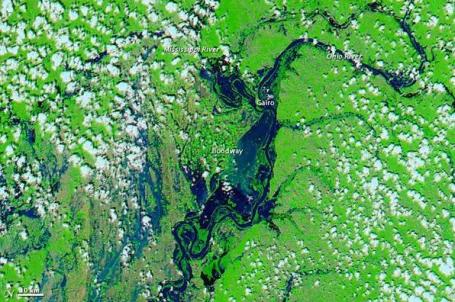
What's Behind The Record Mississippi River Flooding? Image credit: Flooding near Cairo, Ill., after the levee blast on May 2. Credit: MODIS Today/Space Science and Engineering Center, University of Wisconsin-Madison. Our Amazing Planet has a good summary of the historic flooding taking place on the Mississippi - some are comparing this to record floods in 1927 and 1937: "Several towns along the Mississippi River and its tributaries have set water-level records, and there is some speculation that this year could rival the 1927 Mississippi River flood, the worst in U.S. history. Towns that have set records so far:
- Cairo, Ill. (Ohio River): 61.72 feet (19 m). Previous record set Feb. 3, 1937, at 59.5 feet (18.1 m).
- Caruthersville, Mo. (Mississippi River): 46 feet (14 m), ties previous record set Feb. 5, 1937. A high of 49.5 feet (15 m) is expected this week.
- Pocahontas, Ark. (Black River): 28.47 feet (8.7 m). Previous record set Aug. 4, 1915, at 27.9 feet (8.5 m).

One-Stop Flood Resources Page. NOAA has a link with updates on the expected crests around the Memphis area.
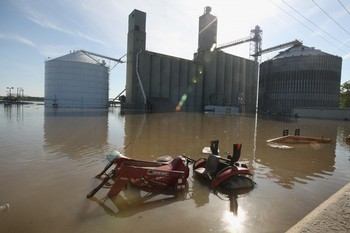
Caruthersville In Southeastern Missouri Awaits Record Crest. 11 states are experiencing record, or near-record flooding on the Ohio and Mississippi Rivers. The Stamford Advocate has an update: "ST. LOUIS (AP) — Residents of the southeast Missouri town of Caruthersville braced Thursday for a flood crest expected to have the Mississippi River lapping at the top of the floodwall. Even as most rivers were finally starting to recede in the flood-ravaged area, the worst was still expected to come in the town of 6,700 roughly halfway between St. Louis and Memphis, Tenn. Members of the Missouri National Guard were taking no chances, building not only a wall of sandbags to catch overflow if the wall is topped but a series of earthen berms behind the sandbags. "The berms will reinforce protection of the city by trapping the water after it crests over the sea wall," National Guard Staff Sgt. Steven Anderson, who is helping coordinate the effort, said. The river topped the previous record crest of 46 feet — set in 1937 — on Wednesday, and stood at 47.2 feet by Thursday afternoon. It is expected to reach 49.5 feet on Sunday, a half-foot below the top of the floodwall. Because Caruthersville is so flat, water could pour into much of the community if it gets past the permanent and temporary protections."
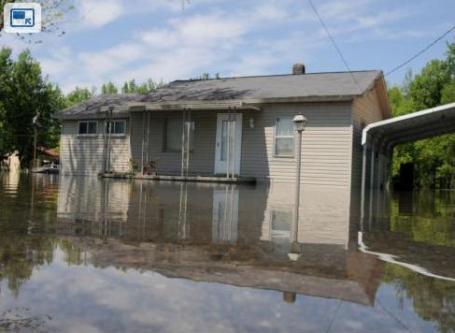
Flood Danger Spreads Along Mississippi. Last week's tornadoes did their damage in under a minute, moving along at 40-50 mph at times. An even larger (slow-motion) disaster is unfolding in at least 11 states on the Mississippi, as reported by USA Today: "NEW ORLEANS — Three recent explosions at levees have helped ease the dangerously swollen Mississippi River, though the waterway continues to rise to historic levels and threatens to overrun some cities, the Army Corps of Engineers says. Emergency officials from Missouri to Mississippi scrambled Wednesday to prepare for potential flooding as the river continued to rise. Fears have prompted an emergency declaration for 920,000 residents in Memphis and surrounding Shelby County, Tenn., where authorities blocked some suburban streets and more than 200 people evacuated to shelters. Mississippi Gov. Haley Barbour, a Republican, asked the White House to declare 11 counties along the river disaster areas in anticipation of flooding, as Vicksburg, Natchez and other riverfront communities braced for floods. President Obama on Wednesday declared parts of Tennessee, Mississippi and Kentucky disasters, making them eligible for federal help with relief efforts. Heavy snowmelts from Minnesota and North Dakota combined with three large rain events this year have triggered the rising river levels, says Bob Anderson, an Army Corps spokesman based in Vicksburg, Miss. While the levee breaches helped bring down water levels in some areas, relentless water pressure continued to threaten river communities in the Ohio and Mississippi river valleys. "There's never been a flood of this magnitude on the upper Mississippi," Anderson says. "It's testing the outer limits of our system."
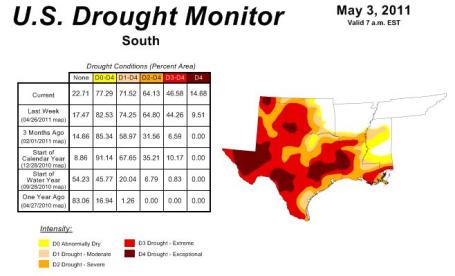 "Exceptional" Drought. Much of Texas, Louisiana and Oklahoma is enduring the worst drought in nearly a century, rivaling the Dust Bowl years of the 1930s. Details here.
"Exceptional" Drought. Much of Texas, Louisiana and Oklahoma is enduring the worst drought in nearly a century, rivaling the Dust Bowl years of the 1930s. Details here.
In Bin Laden's Compound, Seal's All-Star Team. The New York Times has more details on what really went down: "WASHINGTON — There were 79 people on the assault team that killed Osama bin Laden, but in the end, the success of the mission turned on some two dozen men who landed inside the Qaeda leader’s compound, made their way to his bedroom and shot him at close range — all while knowing that the president of the United States was keeping watch from Washington. The men, hailed as heroes across the country, will march in no parades. They serve in what is unofficially called Seal Team 6, a unit so secretive that the White House and the Defense Department do not directly acknowledge its existence. Its members have hunted down war criminals in Bosnia, fought in some of the bloodiest battles in Afghanistan and shot three Somali pirates dead on a bobbing lifeboat during the rescue of an American hostage in 2009. The raid early Monday in Pakistan has nonetheless put a spotlight on a unit that has been involved in some of the American military’s most dangerous missions of recent decades."

The Want For Privacy: Facebook's Assault On Friendship. Hmm. Not sure about this one, but there is a lot of angst about "Facebook Friends", just who are these people I just friended, and how all of us are giving up a fair amount of privacy for "free" services that connect us 24/7. Here is something to think about from Huffington Post: "In a provocative deconstruction of the Patriot Act, Elaine Scarry theorizes about the implications of this involuntary dissolution of privacy on social interaction. As she writes in "Rule of Law, Misrule of Men," "When we say that democracy requires that the people's privacy by ensured, we do not mean that our lives remain secret; we mean instead that we individually control the degree to which, and the people to whom, our lives are revealed." She continues, "Such privacy is in turn the basis of a person's capacity for friendship and intimacy. [People] who lose the guarantee of privacy also eventually lose the capacity for making friends." We live in an age of perpetual assault on personal privacy. The Internet has democratized human ability to peer into the private life of the neighbor through an expansive confederation of search engines, online directories and, of course, social networking sites. In a little over half a decade, Facebook has revolutionized the way we interact, relate and even befriend one another. This revolution in social networking is transforming the sphere of the social to the extent that many of us -- this writer included -- have difficulty conceiving of our lives without Facebook, the convenient and near-universal social networking tool to monitor, facilitate and govern our social interactions. Thankfully, we maintain, in most spheres of our lives (and at the time of publication, on Facebook also), the ability to decide who is worthy of knowledge of the intimate details of our personal lives. What is unsettling is that so many of us are voluntarily declining this right to privacy, and opening up our lives to a vast consortium of various, and often spurious, acquaintances: "Facebook friends."

Federal Civics Test Shows Little Progress. Is the education system failing us? Are there simply too many (digital) distractions these days? Are our kids just getting dumber? I don't think so, but why do they know so little about government and how the world really works? What's the problem here? Huffington Post has the story: "NEW YORK -- Can you name the three branches of the American government, their powers, and how other branches limit their powers? If so, you have a leg up on many U.S. eighth graders. Only 7 percent of eighth graders could correctly identify the three branches of government on the civics portion of the 2010 National Assessment of Education Progress test to satisfy the grading standard of "complete." A further 10 percent of the sample group -- 9,600 eighth graders from 470 schools -- received a score of “acceptable” on the question, which asked students to fill out the chart describing the three branches' relationship to one another. The 2010 NAEP results, released Wednesday, showed overall stagnation and low proficiency rates in civics. “That’s pathetic,” former Supreme Court Justice Sandra Day O’Connor told The Huffington Post upon hearing the result of the branches of government question."
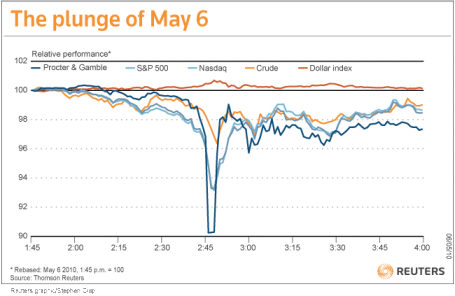
Preventing The Next "Flash Crash". Have any stocks or bonds? If so you may want to give this editorial a quick read, courtesy of the New York Times: "ONE year ago, the stock market took a brief and terrifying nose-dive. Almost a trillion dollars in wealth momentarily vanished. Shares in blue-chip companies were traded at absurdly low prices. High-frequency traders, who use computers to look for microscopic price differences in stocks on different exchanges and other trading venues, stopped trading, while others immediately sold whatever they bought, mainly to each other, in what has been called “hot potato” trading. We haven’t had a repeat of last year’s “flash crash,” but algorithmic trading has caused mini-flash crashes since, and surveys suggest that most investors and analysts believe it’s only a matter of time before the Big One. They’re right to be afraid. The top cop for our financial markets remains inexcusably blind to the activities of high-speed computer trading. After the flash crash, the Securities and Exchange Commission moved quickly to apply a Band-Aid in the form of circuit breakers to limit daily price moves. Then it proposed a long-overdue consolidated audit trail, to plug the gaps in reporting requirements that prevent the efficient tracking and policing of orders and trades. It spent months painstakingly using antiquated methods to reconstruct and study the trading data during the flash crash. With the Commodity Futures Trading Commission, it convened a joint advisory committee, which presented an array of recommendations in February. And it continued to dither.

"Savage Chickens". How To Get Fired. This series of cartoons sums up some creative, effective ways to lose your job (in a hurry). Funny, and oh so true. Huffington Post has the ammunition: "When I got sick of working overtime and getting migraines, I did what any sensible person would do: I started drawing chicken cartoons on sticky notes. Now you can harness the power of these cartoons to help you get rid of your pesky job. It's simple: just repeatedly send these cartoons to your boss (or, even better, try some of these ideas in person) and you'll be unemployed in no time. Savage Chickens feature hardworking chickens and their boss PROD3000 (a productivity robot who maintains order by brandishing a stick with a nail through it). Some of the following cartoons are from my new book, Savage Chickens: A Survival Kit for Life in the Coop, some are from my web site (www.savagechickens.com), and the last one was drawn especially for The Huffington Post."
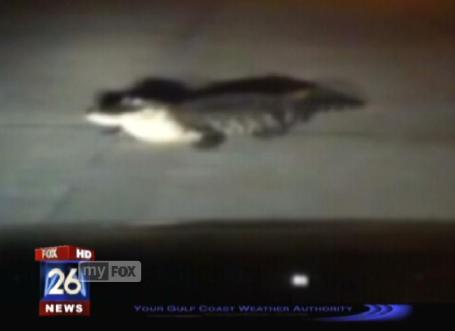
KRIV-TV Meteorologist Encounters Alligator On His Way To Work. I'm feeling better about my commute. Mike Iscovitz is a TV meteorologist for the Fox affiliate in Houston - the other day he got more than he bargained for on the way to work. The story from Media Bistron and NewsBlues: “I didn’t realize how big he was until he turned around and I really got a glimpse of how long his tail was,” said KRIV meteorologist Mike Iscovitz, referring to a 7-foot alligator he encountered on his way to work this week. Iscovitz, who appears on the Houston Fox-affiliate’s morning newscast, captured video of the gator and the station used it as part of a larger segment covering alligator sightings in the Houston area (video above). Iscovitz grew up in Florida so he’s accustomed to seeing gators, although he’s probably not used to those encounters showing up on the evening news. [h/t NewsBlues]"


Wet Start - Promising Finish. I'm always amazed (and horrified) how a little rain at precisely the wrong time can gum up rush hour. Only .15" rain fell on the Twin Cities Thursday morning, but it was enough to trigger gridlock on some freeways. At least the sun came out by afternoon, highs ranging from a chilly 46 at Grand Marais, 51 at Duluth to 63 in St. Cloud and the Tiwn Cities.
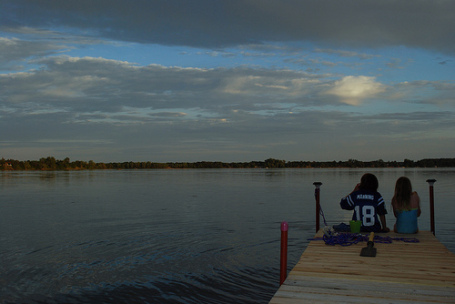
Paul's Conservation Minnesota Outlook for the Twin Cities and all of Minnesota:
TODAY: Partly sunny, a fine spring day. Winds: S 5-10. High: 69
FRIDAY NIGHT: Growing chance of showers, possible thunder. Low: 50
SATURDAY: Showers taper early, then more clouds than sun, damp. Winds: E 10-15. High: 63
SATURDAY NIGHT: Mostly cloudy, still damp. Low: 51
MOTHER'S DAY: Mostly-Happy moms. Partly sunny much of the day, seasonably mild. Winds: E/SE 10-15. High: 67
SUNDAY NIGHT: A few showers likely. Low: 53
MONDAY: Humid, few T-storms around town. High: 72
TUESDAY: Some sun, nagging thunder risk, some heavy. Low: 57. High: 73
WEDNESDAY: Few strong/severe storms? Low: 58. High: 72
THURSDAY: Showers linger, getting tired of puddles. Low: 49. High: 65
FRIDAY: Showers taper, slow clearing late. Low: 42. HIgh: 62
* Right now odds favor sunshine and a cool breeze for the Minnesota's Walleye Fishing Opener - highs mostly in the 60s.

Spring Fling
Minnesota is greening up before our eyes; a little more spring in everyone's step (now that we're not wandering around in jackets, complaining about wind chill).
The old rule of thumb about spring planting is "wait until after Memorial Day" for tender annuals. The way this pattern is unfolding that's probably good advice. Trees, shrubs, perennials? No problem, but maybe hold off on the annuals for another 1-2 weeks, in light of our tentative spring (and a weather map that still looks more like late April).
The sun breaks through today, a dry sky with highs a few degrees above average, for a change. A swirl of cold air aloft sparks a couple hours of showers tomorrow (no all-day rain) - and much of Mother's Day looks dry and seasonably mild. Mom may bump into a late-day shower or T-storm, but the majority of the weekend looks dry, with temperatures right where they should be.
A warm front stalls just to our south most of next week, meaning scattered showers and T-storms from Monday into Friday, even a slight risk of a few strong/severe storms near the Iowa border. Heaviest rains: Wednesday/Thursday. Skies SHOULD clear out in time for the Walleye Opener. For once, good timing!

More On Tornadoes, Floods, Climate And Risk. Science blogger Andrew Revkin takes a closer look at the debate swirling around the recent spike in storms: is this "normal", or is climate change turbo-charging these storms and making them worse? Has something (truly) changed? Graphic above: The death toll was high in several Southern states after devastating storms ripped through the region, spawning deadly tornadoes. The map shows the locations of reported tornadoes each hour (Central time) across the eastern United States since April 21. "Here’s a deeper discussion of efforts to clarify productive steps, both in science and policy, in the face of deadly tornado outbreaks, extraordinary midwestern flooding and climate change. Kevin Trenberth, distinguished senior scientist at the National Center for Atmospheric Research, sent this reaction to yesterday’s post on the importance of addressing deep vulnerability to tornadoes in the South even as efforts are made to curb greenhouse gases. He notes that high sea temperatures linked to human-driven climate warming are contributing to extreme rainfall and thunderstorm activity and possibly tornado outbreaks: There are certainly issues related to warnings and building codes, but you seem to unduly discount climate change and high sea surface temperatures in the Gulf. Tornadoes are difficult to deal with because they are so small. The observational record is not reliable. However less mistakable are the exceptionally heavy rains that accompanied the outbreaks. The multiple supercell thunderstorms are easily evident in satellite pictures and a nice movie of this made by NASA."
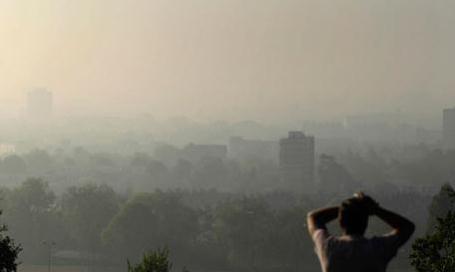
What Next For The Ultimate Climate Change "FAQ"? The U.K. Guardian has the story: "Five months ago, we launched The ultimate climate change FAQ with an aim to build up an archive of answers to lessen the confusion surrounding global warming. Unlike most of the other background guides out there, we wanted the answers to be both accurate and lay-friendly, and to cover not just science but the whole topic, including impacts, economics, emissions sources, energy technologies and international negotiations. More than 750 of you have already submitted the questions that you'd like to see answered and although we've got a very long way to go, we have now dealt with many of the most frequently requested topics. The resulting collection of Q&As is, I hope, starting to grow into a genuinely useful resource. The answers so far have covered subjects ranging from big-picture background (What exactly is the climate?, Are humans definitely causing global warming?) and scientific context (What is the carbon cycle?, How do volcanoes affect the climate?) through to possible impacts (Will rising seas put cities such as New York and London under water?, Will climate change cause wars?), societal responses (What is the economic cost of climate change?, What is the Kyoto protocol and has it made any difference?) and proposed solutions (What is carbon capture and storage?, What is geo-engineering?). You can see a full list of questions and answers, arranged by topic, here."

Climate Scientists Told To "Stop Speaking In Code." Is there really a communications problem/challenge here, or do a significant percentage of people not want to hear the message? Or both? AP has the latest: "COPENHAGEN, Denmark (AP) — Scientists at a major conference on Arctic warming were told Wednesday to use plain language to explain the dramatic melt in the region to a world reluctant to take action against climate change. An authoritative report released at the meeting of nearly 400 scientists in Copenhagen showed melting ice in the Arctic could help raise global sea levels by as much as 5 feet this century, much higher than earlier projections. James White, of the University of Colorado at Boulder, told fellow researchers to use simple words and focus on the big picture when describing their research to a wider audience. Focusing too much on details could blur the basic science, he said: "If you put more greenhouse gases in the atmosphere, it will get warmer." Prominent U.S. climate scientist Robert Corell said researchers must try to reach out to all parts of society to spread awareness of the global implications of the Arctic melt. "Stop speaking in code. Rather than 'anthropogenic,' you could say 'human caused,'" Corell said. The Arctic has been warming twice as fast as the global average in recent decades, and the latest five-year period is the warmest since measurements began in the 19th century, according to the report by the Arctic Monitoring and Assessment Program — a scientific body set up by the eight Arctic rim countries."
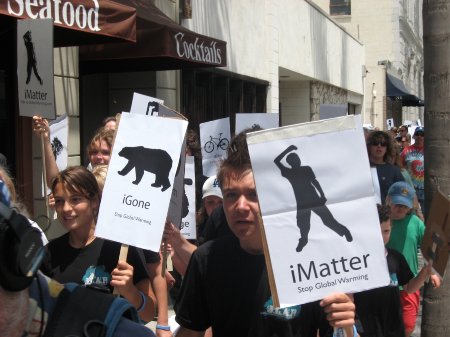
Suit Accuses U.S. Government Of Failing To Protect Earth For Generations Unborn. The New York Times has the details of an unconventional lawsuit (from a group of teenagers): "SAN FRANCISCO — Advocates of stringent curbs on greenhouse gas emissions sued the federal government on Wednesday, arguing that key agencies had failed in their duty to protect the earth’s atmosphere as a public trust to be guarded for future generations. Similar lawsuits are to be filed against states around the country, according to the plaintiffs, a coalition of groups concerned about climate change called Our Children’s Trust. Most of the individual plaintiffs in the suit, filed in United States District Court in San Francisco, are teenagers, a decision apparently made to underscore the intergenerational nature of the public trust that the earth’s atmosphere represents. More novel, however, is the suit’s reliance on the public trust doctrine, which dates to Roman times."

Climate Activists Target States With Lawsuits. More on the story mentioned above, this time from Bloomberg Businessweek: "A group of attorneys representing children and young adults began to file legal actions Wednesday in every state and the District of Columbia in an effort to force government intervention on climate change. The courtroom ploy was backed by activists looking for a legal soft spot to advance a cause that has stumbled in the face of stiff congressional opposition and a skeptical U.S. Supreme Court. The goal is to have the atmosphere declared for the first time as a "public trust" deserving special protection. That's a concept previously used to clean up polluted rivers and coastlines, although legal experts said they were uncertain it could be applied successfully to climate change. The spate of lawsuits, led by an Oregon-based nonprofit called Our Children's Trust, were based on "common law" theories, not statutes adopted by state or federal lawmakers. Documents in the cases were provided in advance to The Associated Press."
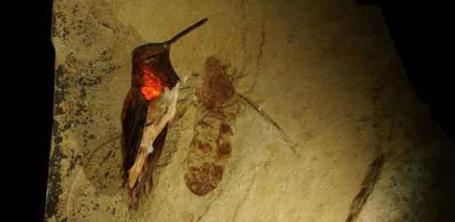
How Global Warming Caused The Attack Of The Giant Ants. Great. Milfoil. Flying carp. Killer bees. Now we have to worry about giant ants? Discover Magazine has the story: "It sounds like the opening plot to a made-for-TV horror flick: Global warming renders an Arctic land bridge habitable, spurring a race of “monstrously big ants” to blaze a trail between Europe and America. This particular horror story actually played out 50 million years ago, and the monstrously big ants were only about 2 inches long, about the size of the smallest known hummingbird. Archeologists recently unearthed the fossilized remains of this new giant ant species—one of the largest ant species ever seen—in Wyoming, making it the first complete giant ant fossil found in America. And because similar giant ants have been found in Europe, they think this is the first reported example of a tropical insect traipsing across the Arctic. It all started when paleoentomologist Bruce Archibald spied a fossil that was sitting in a drawer at the Denver Museum of Nature and Science. “I immediately recognized it and said, ‘Oh my god, this is a giant ant and it looks like it’s related to giant ants that are known from about this time in Germany,’” as he told Live Science. The fossil they found was a queen ant, so we still don’t know how large the average worker was. Because of its whopping 2-inch length, he included the word “titan” into the new species, dubbing it Titanomyrma lubei."
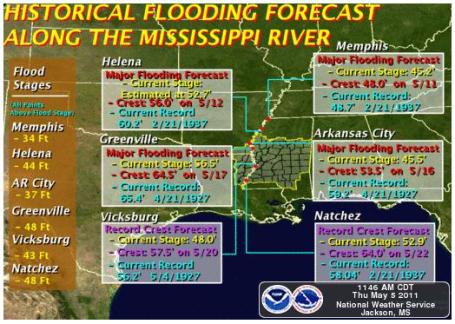

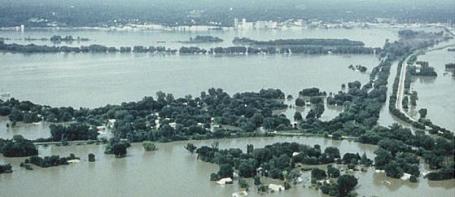
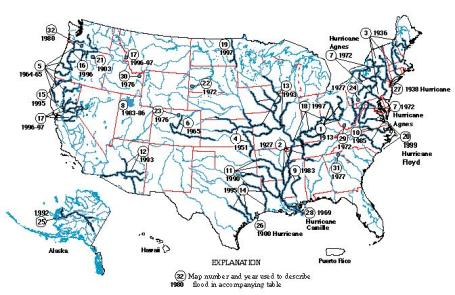
No comments:
Post a Comment